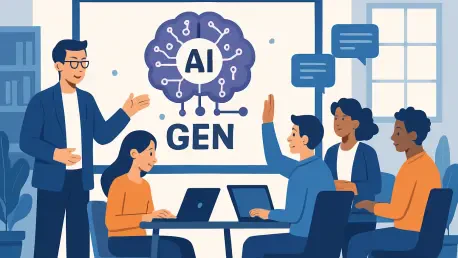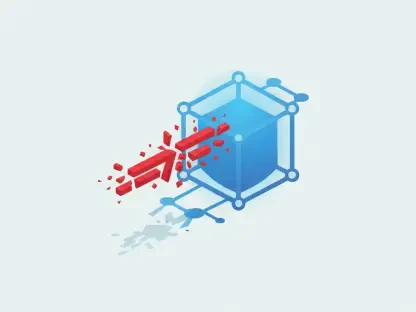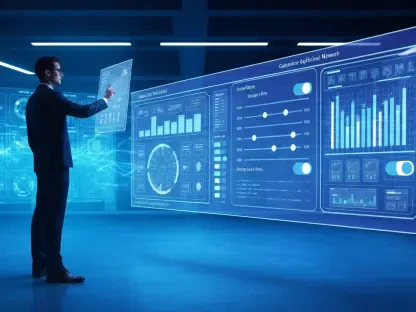I’m thrilled to sit down with Chloe Maraina, a trailblazer in Business Intelligence with a deep passion for weaving compelling visual stories from big data. With her expertise in data science and a forward-thinking vision for data management and integration, Chloe has become a leading voice in the realm of generative AI (GenAI) systems for enterprise applications. Today, we’ll dive into the critical role of learning-enabled GenAI systems, exploring how they adapt through usage, the importance of feedback and logging, the power of reinforcement learning, and the delicate balance between privacy and performance in enterprise settings.
How do you see the ability of a GenAI system to learn from its own behavior shaping success in enterprise environments?
I believe it’s absolutely fundamental. Enterprises operate in dynamic environments where user needs, market conditions, and business goals shift constantly. A GenAI system that can learn from its interactions—whether it’s through user feedback or outcome tracking—stays relevant and effective. Without that learning capability, you’re stuck with a tool that’s essentially a snapshot in time, unable to grow with the organization’s needs. It’s the difference between a system that solves yesterday’s problems and one that anticipates tomorrow’s challenges.
What are the consequences when a GenAI system lacks the ability to adapt or evolve over time?
When a system can’t adapt, it quickly becomes obsolete. Imagine a customer service bot that keeps giving outdated responses because it can’t learn from new customer interactions or feedback. Over time, users get frustrated, engagement drops, and the system’s value diminishes. In industries like retail or finance, where trends and regulations change rapidly, a static system can even lead to costly mistakes—think outdated fraud detection rules missing new patterns. It’s not just about performance; it’s about staying aligned with reality.
Why do you place such a strong emphasis on logging as a cornerstone for improving GenAI systems in enterprises?
Logging is the backbone of learning. It’s how a system gains visibility into its own performance—capturing prompts, completions, user feedback, and outcomes. Without logging, there’s no data to analyze, no way to identify what’s working or failing. In my experience across industries like consumer packaged goods and finance, I’ve seen how even basic logging can uncover patterns that drive massive improvements, like spotting ineffective responses or overused prompts. It’s not a luxury; it’s the price of staying competitive.
Can you walk us through how reinforcement learning plays a role in GenAI systems for someone unfamiliar with the concept?
Absolutely. At its core, reinforcement learning, or RL, is about learning through trial and error. Picture an AI system as an agent in an environment. It takes an action—like generating a response to a query—receives a reward based on how well that action worked, and then adjusts its approach to maximize future rewards. In GenAI, this might mean tweaking responses based on user satisfaction or task completion rates. It’s like teaching a child to ride a bike: they wobble at first, but with feedback, they get steadier. In enterprises, RL helps systems refine their decision-making over time.
How does reinforcement learning from human feedback extend beyond the initial training phase in enterprise applications?
Reinforcement learning from human feedback, or RLHF, isn’t just a one-and-done during training—it’s a continuous process post-deployment. In enterprise settings, systems can keep learning from real-world interactions. For instance, a customer support AI might adjust based on how users rate its responses or whether they resolve issues. This ongoing refinement ensures the system stays aligned with user expectations and business objectives, even as those evolve. It’s about creating a living system, not a static tool.
What are some of the privacy concerns enterprises face with logging data for learning, and how do you approach those challenges?
Privacy is a huge concern, and rightfully so. Enterprises, especially in regulated industries like finance or healthcare, worry about exposing sensitive user data through logging. My approach is to prioritize privacy-preserving techniques from the start. We can use methods like differential privacy, which adds noise to data to protect individual identities, or federated learning, where learning happens locally without centralizing sensitive information. It’s about building trust—ensuring users and regulators know we’re safeguarding data while still enabling the system to improve.
What practical design choices can enterprises make to ensure safe learning in their GenAI systems?
There are several straightforward choices that make a big difference. One is implementing redaction pipelines to mask sensitive information while still logging structural data—like the format of a prompt without personal details. Another is using outcome-based reward functions, where the system learns from implicit signals like task completion rather than raw user data. Dual-stream architectures, separating user-facing tasks from internal learning loops, also help. These designs allow learning to happen safely, even under strict compliance rules.
Can you share a real-world example where continuous learning post-deployment significantly impacted an industry like retail or finance?
Certainly. In retail, I’ve seen recommendation engines transform through continuous learning. One e-commerce platform logged user behavior—things like what items were ignored, added to carts, or reordered—without capturing personal identifiers. Over time, the system learned to suggest products that better matched customer preferences, leading to higher conversion rates and repeat purchases. That adaptability, driven by post-deployment learning, turned a basic tool into a revenue driver. It’s a clear example of how learning from usage can create a competitive edge.
What’s your forecast for the future of learning-enabled GenAI systems in enterprise settings?
I’m incredibly optimistic about where this is headed. I foresee GenAI systems becoming even more autonomous in their learning, moving toward what I call constitutional learning—where they self-improve within predefined safety and compliance boundaries. As privacy-preserving techniques like federated learning become more accessible, I think we’ll see broader adoption across industries, even in highly regulated ones like pharma. The future is about systems that don’t just react but anticipate, continuously evolving to meet enterprise needs while maintaining trust and accountability.









